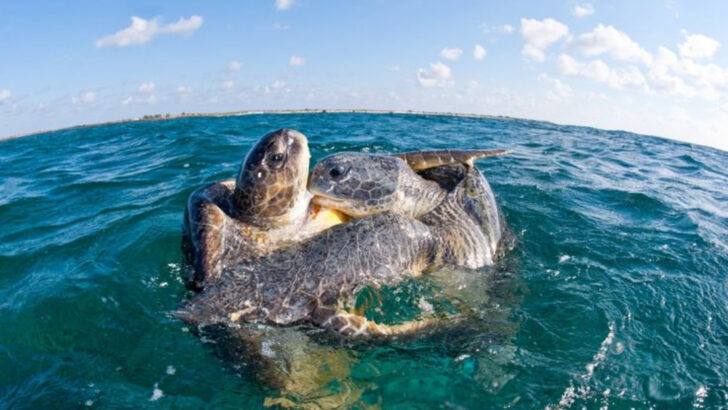Sea turtles are living proof that toughness isn’t just about sharp teeth and killer instincts. These ancient mariners have been gliding through the oceans for over 100 million years, outlasting dinosaurs, dodging predators, and battling the harshest conditions nature can throw at them. If survival had a championship belt, they’d be wearing it.
They start life as tiny, vulnerable hatchlings, scrambling across the sand while hungry birds and crabs lie in wait. The ocean? Not much safer. Sharks, pollution, and fishing nets are just a few of the countless dangers they navigate daily. And yet—they persist.
From incredible migration journeys to built-in survival tricks, sea turtles are the ultimate ocean warriors. They adapt, endure, and keep on swimming, no matter what. Want proof? Here are 20 reasons these incredible creatures deserve every ounce of our admiration.
Ancient Lineage
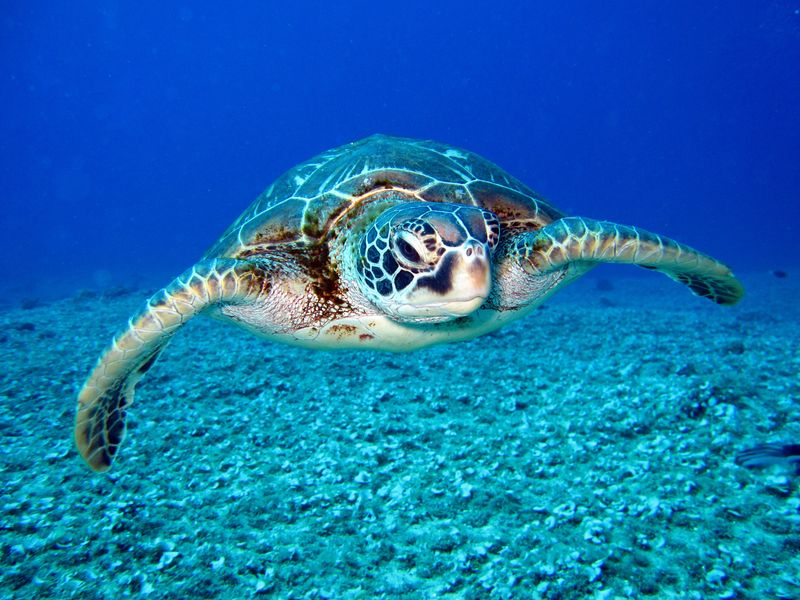
Sea turtles boast an ancient lineage that has witnessed the rise and fall of dinosaurs. Their evolutionary journey spans over 100 million years, showcasing their resilience. This longevity is a testament to their adaptability and survival instincts. They have weathered multiple extinction events, demonstrating an unparalleled capability to thrive amid changing conditions. Their existence today is a living record of Earth’s natural history. Understanding their evolutionary path provides insight into their survival strategies. This rich heritage underscores their significant role in the marine ecosystem and highlights their enduring legacy as true survivors of the sea.
Protective Shells
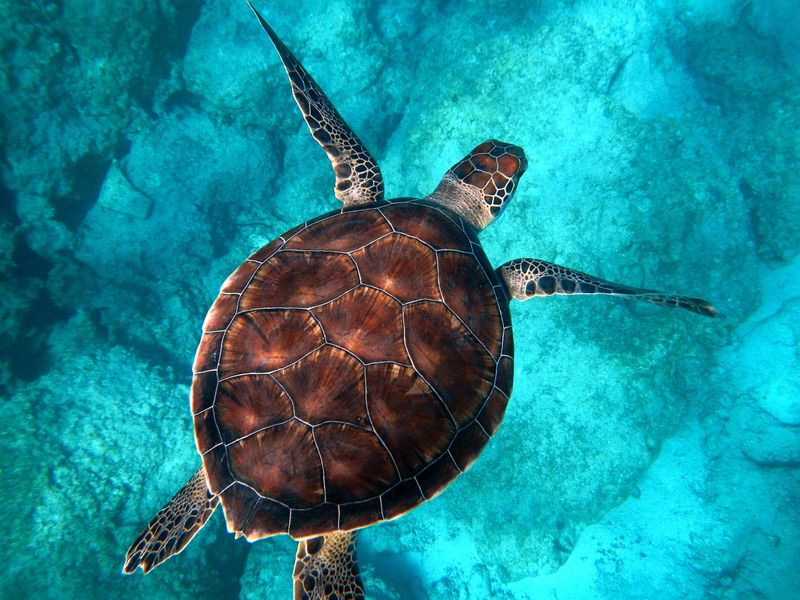
The iconic shell of a sea turtle serves as a formidable shield against predators. This evolutionary marvel is composed of hard, bony plates, known as scutes, providing essential protection. The shell’s structure not only offers defense but also aids in buoyancy and swimming efficiency. Its unique design features intricate patterns that blend seamlessly with underwater habitats, enhancing camouflage. These shells are crucial for sea turtle survival, enabling them to navigate diverse marine environments safely. Their durable armor reflects a perfect balance of strength and functionality, allowing sea turtles to thrive amidst oceanic challenges.
Migratory Wonders
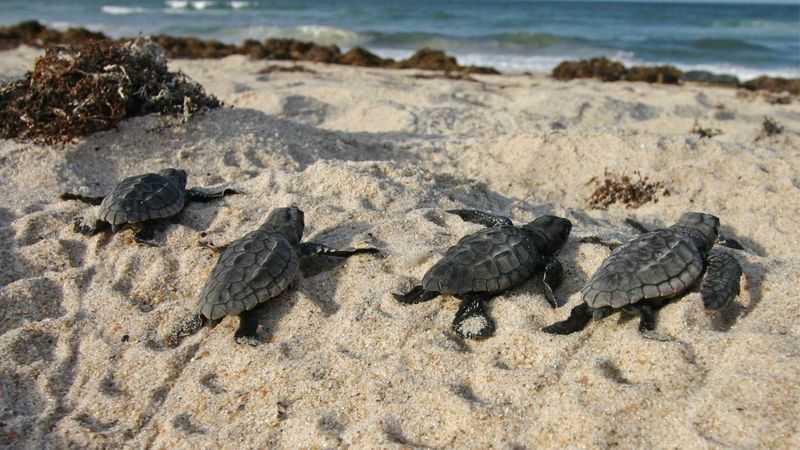
Sea turtles are renowned for their extraordinary migratory behavior, traversing thousands of miles across oceans. This incredible journey is guided by an innate ability to navigate using Earth’s magnetic fields. Such migrations are essential for their survival, allowing access to feeding and nesting grounds. Throughout their lives, sea turtles encounter diverse marine conditions, showcasing remarkable adaptability. These long-distance travels play a crucial role in maintaining healthy oceanic ecosystems. They contribute to nutrient distribution and connect different marine habitats. The migratory patterns of sea turtles exemplify their resilience and remarkable navigational skills.
Efficient Lungs
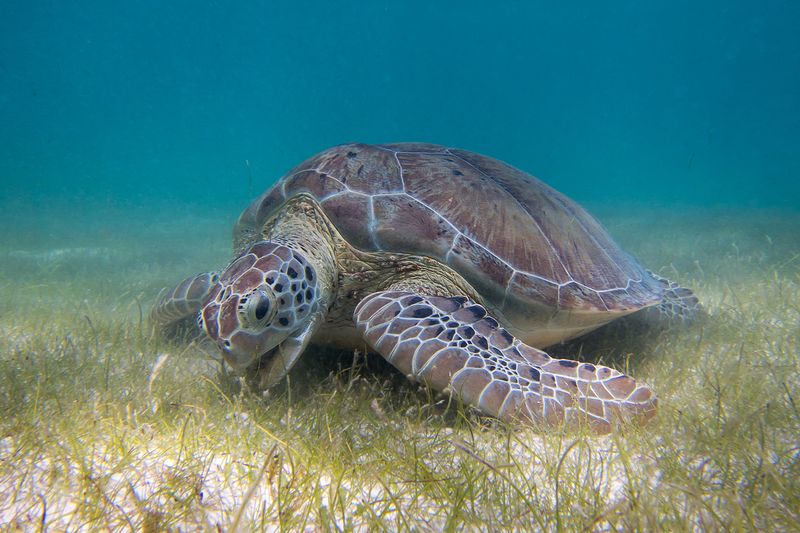
Sea turtles have incredibly efficient lungs that allow them to remain submerged for extended periods. These specialized respiratory systems facilitate deep dives and long journeys underwater. Their lungs can rapidly exchange oxygen, enabling sea turtles to optimize their breath-holding capacity. This adaptation is crucial for avoiding predators and accessing distant feeding areas. The ability to hold their breath for hours at a time highlights their incredible physiological resilience. This respiratory efficiency is a key factor in their survival, supporting their expansive oceanic lifestyle. Sea turtles showcase nature’s ingenuity in overcoming challenges beneath the waves.
Flexible Diet
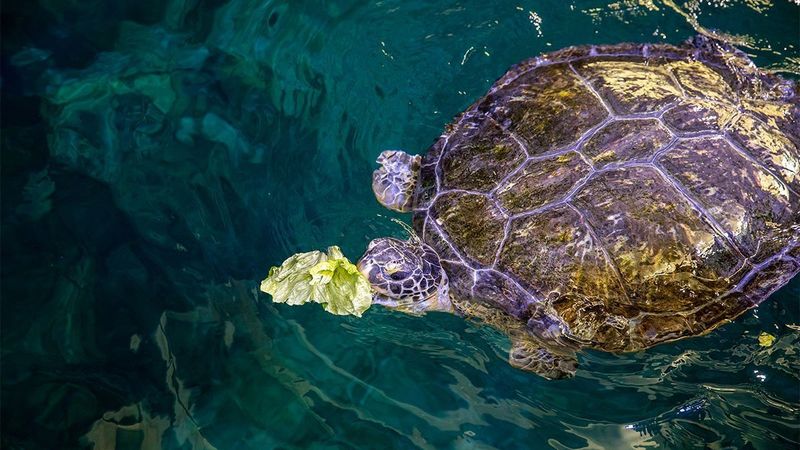
Sea turtles exhibit dietary flexibility, consuming a varied diet that includes seagrass, algae, and jellyfish. This adaptability allows them to thrive in diverse marine environments. Their omnivorous diet supports their survival by providing essential nutrients and energy sources. This ability to exploit different food resources ensures they can sustain themselves even when preferred foods are scarce. Such dietary versatility highlights their resilience in adapting to fluctuating oceanic conditions. By maintaining a balanced diet, sea turtles contribute to the health of marine ecosystems, playing a vital role in nutrient cycling and habitat maintenance.
Long Lifespan
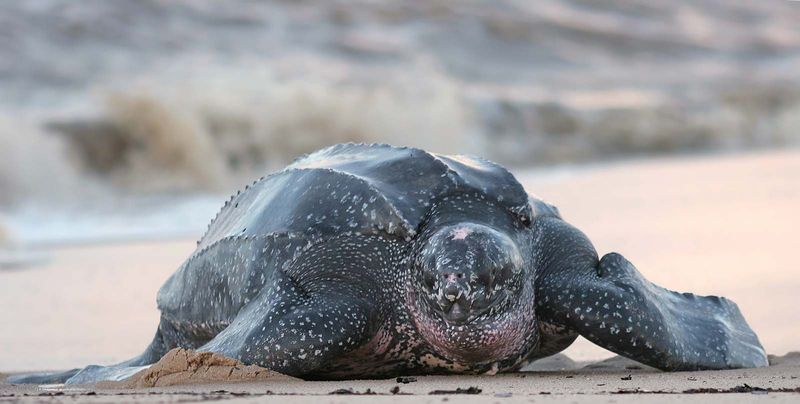
Sea turtles are known for their impressive lifespan, often exceeding 50 years. This longevity is a result of their robust physiology and natural defenses. Their extended lifespan allows them to reproduce multiple times, ensuring the continuation of their species. This characteristic also grants them the opportunity to adapt to long-term environmental changes. By surviving for decades, sea turtles can impact their ecosystems significantly. Their long lives contribute to the stability and resilience of marine habitats. This enduring presence in the ocean underscores their remarkable capacity for survival and adaptation over time.
Exceptional Navigators
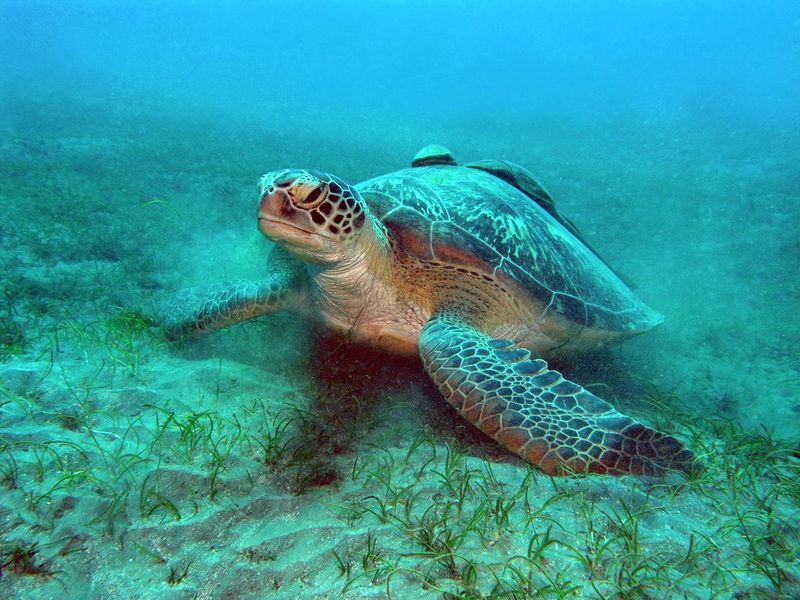
Sea turtles possess exceptional navigational skills, often described as nature’s GPS. They can traverse thousands of miles with astounding accuracy, returning to the same breeding grounds. This ability is believed to be guided by Earth’s magnetic fields, which they sense and interpret. Their precise navigation ensures successful reproduction and access to critical resources. These journeys are vital for their survival, connecting various marine ecosystems. Their innate navigation reflects an extraordinary evolutionary adaptation, allowing them to overcome vast oceanic distances. Sea turtles exemplify nature’s brilliance in ensuring long-term survival through incredible migratory precision.
Resilient Hatchlings
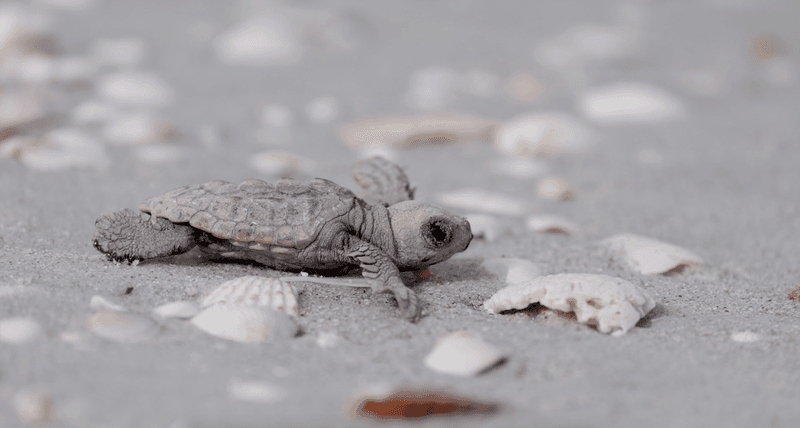
Sea turtle hatchlings face daunting odds from the moment they emerge from their eggs. These tiny creatures must navigate treacherous paths to the ocean, avoiding predators and obstacles. Despite their vulnerability, hatchlings demonstrate remarkable resilience and determination. Their journey is a critical survival phase, requiring innate instincts and strength. This early experience equips them with essential survival skills for ocean life. The successful transition from beach to sea is a testament to their tenacity. Sea turtle hatchlings symbolize the indomitable spirit of survival, overcoming adversity to join the ranks of oceanic survivors.
Thermal Regulation
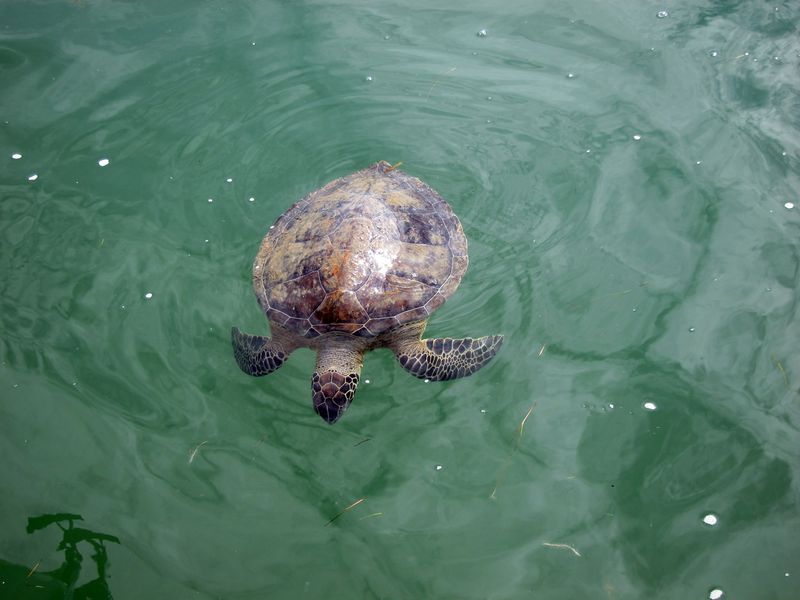
Sea turtles possess the ability to regulate their body temperature using the sun. This behavior, known as thermoregulation, is crucial for their survival. By basking on sunny beaches, they can absorb heat and warm up, aiding in digestion and mobility. This adaptation is particularly important for cold-blooded animals like sea turtles. Efficient thermal regulation allows them to thrive in various climates and water temperatures. It supports their energetic needs and enhances their ability to forage and evade predators. This adaptability to thermal environments showcases their resilience and remarkable survival strategies.
Cultural Significance
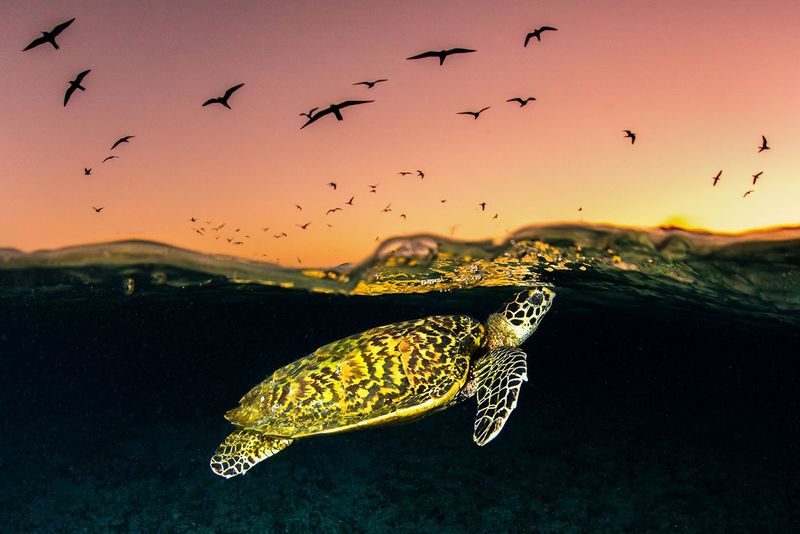
Sea turtles hold significant cultural importance in many human societies. They are often revered as symbols of wisdom, longevity, and good fortune. Throughout history, sea turtles have appeared in mythology, art, and folklore. Their presence reflects a deep connection between humans and the natural world. These cultural symbols emphasize the need to protect and preserve sea turtles. Their revered status inspires conservation efforts, highlighting their role in biodiversity. By safeguarding sea turtles, we honor cultural heritage and promote ecological balance. This mutual relationship underscores their enduring presence in both natural and human realms.
Unique Reproduction
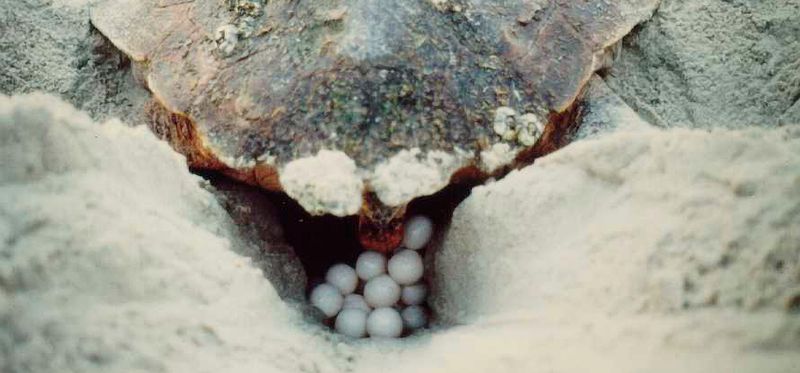
Sea turtles exhibit unique reproductive behaviors, returning to the same beaches to lay eggs. This fidelity to nesting sites is known as natal homing. It ensures the continuation of their genetic lineage, contributing to population stability. Female turtles lay hundreds of eggs in carefully dug nests, maximizing survival chances. This reproductive strategy is crucial for species continuation despite low hatchling survival rates. The cyclical nature of their reproduction highlights their connection to specific habitats. By safeguarding these nesting grounds, we support their successful reproduction. Sea turtles exemplify dedication to survival through their remarkable reproductive cycle.
Diverse Species

Sea turtles encompass a diverse array of species, each adapted to unique marine environments. From the massive leatherback to the agile hawksbill, each species contributes to oceanic biodiversity. This diversity reflects their ability to occupy various ecological niches, supporting overall marine health. Different species have specialized diets, habitats, and behaviors, enhancing ecosystem dynamics. Their collective presence strengthens the resilience of ocean ecosystems. Understanding this diversity is essential for effective conservation efforts. By protecting all species, we ensure the continuation of their vital ecological roles. Sea turtles exemplify the beauty and complexity of marine life.
Symbiotic Relationships
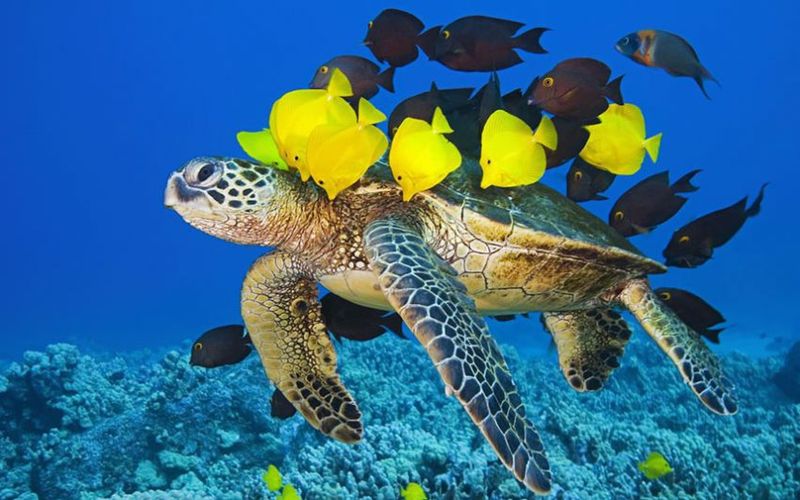
Sea turtles engage in symbiotic relationships with various marine organisms. These interactions benefit both parties, enhancing survival and ecosystem health. For example, cleaner fish remove parasites from turtle shells. This mutualistic behavior supports turtle health while providing food for the fish. Such relationships illustrate the interconnectedness of ocean life, highlighting sea turtles’ role in maintaining balance. By fostering these connections, sea turtles contribute to biodiversity. Their presence facilitates complex ecological networks that sustain marine ecosystems. These symbiotic interactions exemplify nature’s collaborative strategies for survival. Sea turtles are pivotal in creating harmonious oceanic habitats.
Adaptable Locomotion
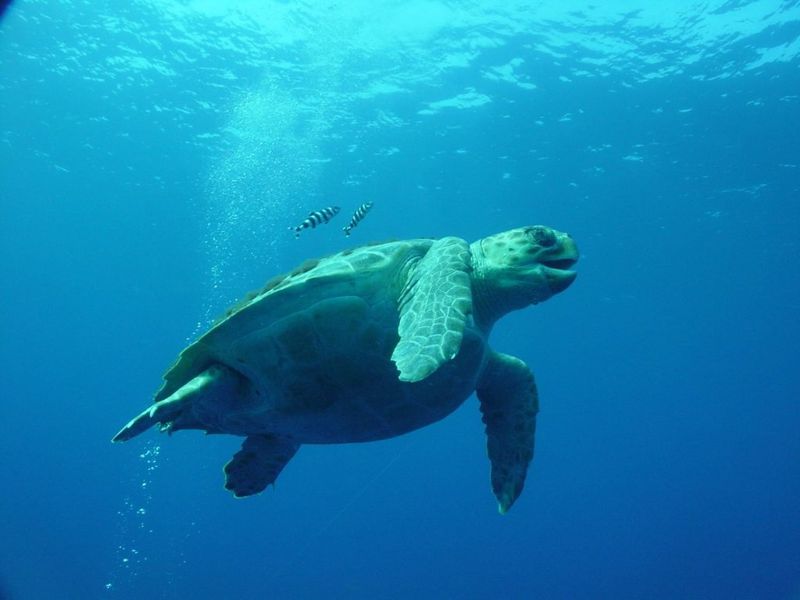
Sea turtles demonstrate adaptable locomotion, allowing them to navigate diverse marine environments. Their flippers are expertly designed for efficient swimming, enabling agile movements. This adaptability supports their long migrations and foraging activities. Sea turtles can modify their swimming techniques to suit different water conditions. Whether gliding through strong currents or maneuvering in coral reefs, they exhibit remarkable fluidity. This locomotive versatility is essential for accessing various habitats and resources. Adaptable locomotion enhances their ability to thrive in ever-changing oceans, showcasing their evolutionary success. Sea turtles embody nature’s ingenuity in overcoming aquatic challenges.
Minimalistic Existence
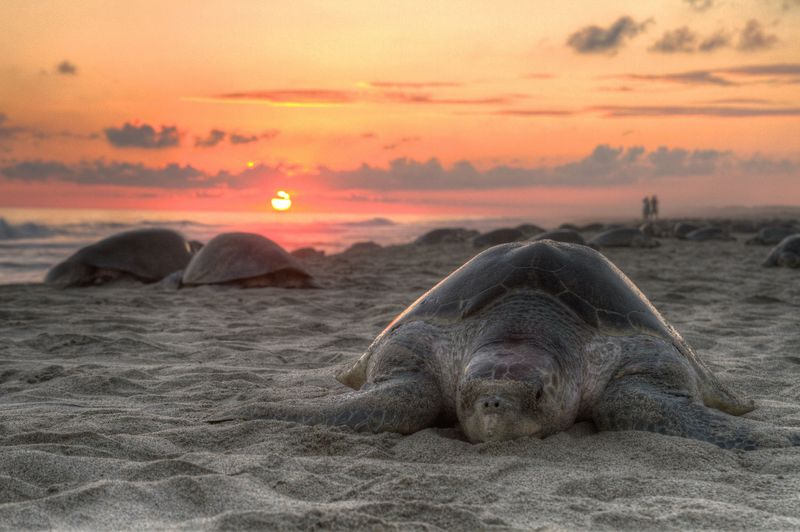
Sea turtles exemplify minimalistic existence, thriving with limited resources. Their simple lifestyle is characterized by efficient energy use and resourcefulness. They require minimal sustenance to maintain their essential functions. This frugality supports their survival in the vast, unpredictable ocean. By prioritizing essential needs, sea turtles effectively navigate sparse food availability. Their minimalist approach underscores a profound understanding of their environment. This adaptability enables them to withstand periods of scarcity and ensures long-term survival. Sea turtles’ ability to thrive with minimal resources highlights their resilience and ecological wisdom.
Predatory Avoidance
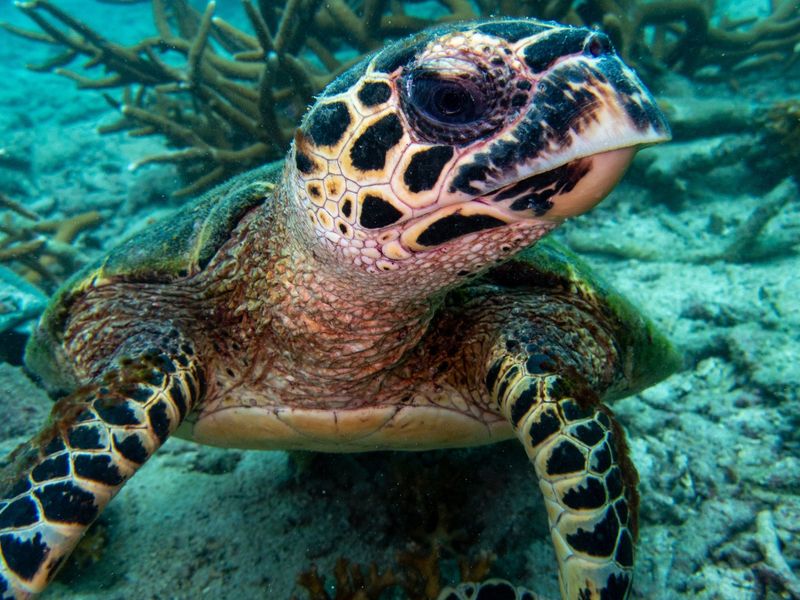
Sea turtles possess innate abilities to evade predators, enhancing their survival prospects. Their streamlined bodies and agile movements enable quick escapes. This agility is complemented by their keen senses, allowing them to detect threats early. Sea turtles’ protective shells offer an additional defense layer against attacks. These combined adaptations enable them to thrive despite the presence of natural predators. Successful predator avoidance is crucial for their longevity and reproductive success. Sea turtles embody nature’s strategic defenses, showcasing their prowess in navigating predator-rich environments. Their survival instincts highlight their remarkable evolutionary achievements.
Conservation Icons
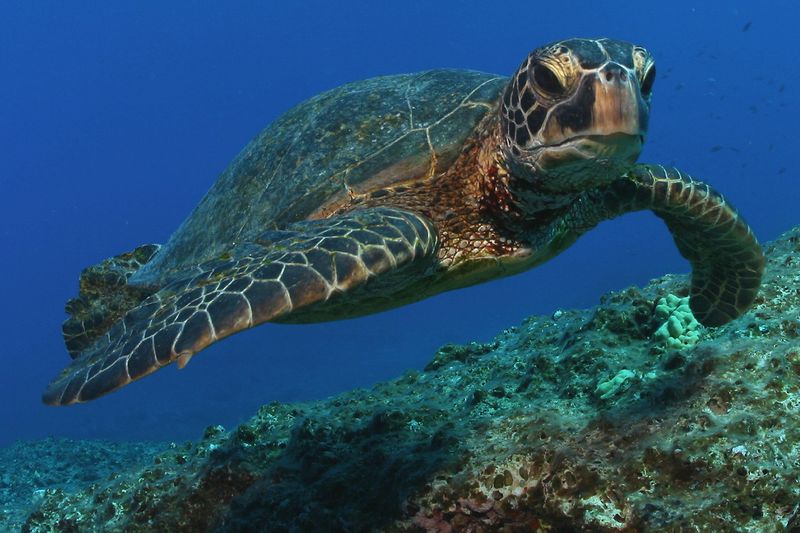
Sea turtles have become icons for global conservation efforts, representing the broader struggle to protect marine environments. Their plight highlights critical issues like habitat destruction and climate change. Conservation initiatives focus on protecting nesting sites, reducing bycatch, and fostering awareness. Sea turtles rally public support, inspiring action for ocean preservation. They symbolize hope and resilience, encouraging sustainable practices. By safeguarding sea turtles, we contribute to broader marine protection. Their iconic status underscores the importance of biodiversity and ecological balance. Sea turtles inspire a collective commitment to ensuring an enduring future for our oceans.
Ecosystem Engineers
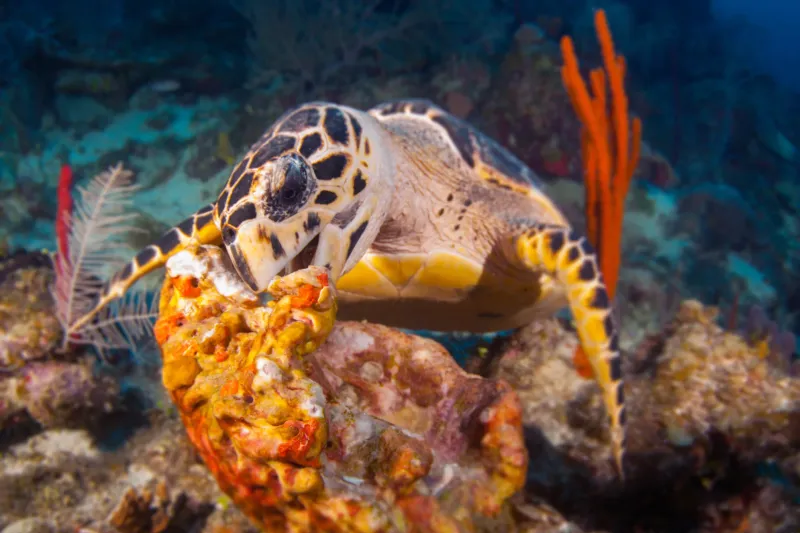
Sea turtles are vital ecosystem engineers, influencing marine habitats through their feeding behaviors. By grazing on seagrass, they maintain healthy seabed ecosystems, preventing overgrowth. This activity enhances nutrient cycling and supports biodiversity. Their role as ecosystem engineers extends to coral reefs, where they manage algae growth. Sea turtles’ interactions contribute to habitat resilience, fostering diverse marine life. Understanding their ecological impact is crucial for conservation and management strategies. By preserving sea turtles, we support the broader health of ocean ecosystems. Their contribution as ecosystem engineers exemplifies their integral role in marine environments.
Global Presence
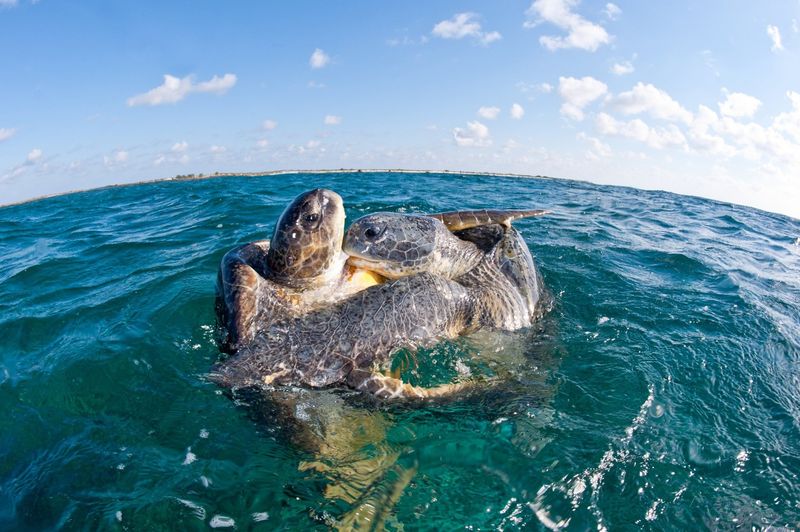
Sea turtles have a global presence, inhabiting oceans across the world. Their widespread distribution reflects their adaptability to various marine conditions. They occupy diverse habitats, from tropical beaches to vast open seas. This global reach is supported by their migratory behavior, connecting distant ecosystems. Sea turtles’ presence in multiple regions underscores their role in maintaining oceanic biodiversity. Their global influence highlights the interconnectedness of marine life. Protecting sea turtles is essential for preserving the health of global marine ecosystems. Their widespread presence exemplifies their significance as oceanic ambassadors, fostering international conservation efforts.
Climate Resilience
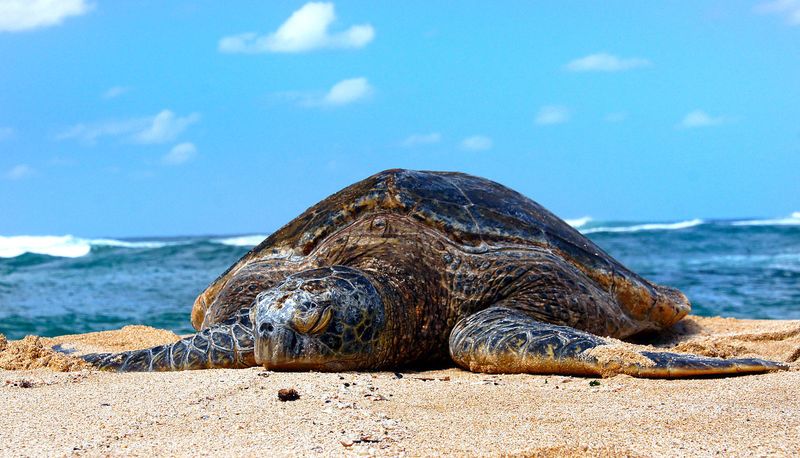
Sea turtles display remarkable climate resilience, adapting to environmental changes over time. Their long evolutionary history shows an ability to endure varying climate conditions. As climate change impacts marine environments, sea turtles adjust their behaviors and habitats. This adaptability is crucial for their survival and the health of marine ecosystems. Conservation efforts focus on supporting their resilience through habitat protection and management. Sea turtles serve as indicators of ocean health, highlighting the need for climate action. Their ability to adapt to changing conditions underscores their role as resilient ocean survivors, guiding conservation priorities.

